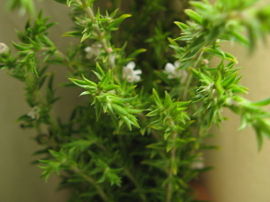The morning coffee was made in this coffee pot at my grandparents’ house. It is a coffee pot/maker, with four different components, all white porcelain. A cylindrical filter sits on top of the pot, into which the coffee (coarsely ground) is added. On top of that, sits another piece – a shallow cup with a few small holes punched around the perimeter into which the hot water is poured. The small holes allow the water to drip slowly over the coffee grounds. When the coffee is finished being brewed, the filter and water disperser are removed and replaced with a top that has a little acorn-shaped knob. The coffee is then ready to be served from the pot.
My grandparents had several of these pots, in varying sizes. I’m not sure when they got them (wedding presents, perhaps?), but they brought them when they emigrated to this country in 1939 so they’re probably from the mid-30s. They brought a lot of things – aka stuff – with them, household items and clothes and more, all packed into crates for the ocean voyage. It’s odd to think of people bringing large amounts of their personal belongings (including huge pieces of furniture) when they are fleeing from a place with their lives in danger. But that is what happened. And now, in our family at least, we still have a lot of these things. The kitchen things – cookware and dishes and the like – are for the most part such beautiful, well-made and functional objects that my mother and I each use many of these items in our respective kitchens on a daily basis. This coffee pot is but one example. (My mother has one of the smaller ones).
Surprisingly, I just discovered that the company who made these pots, Walküre Porzellan, is still in business and continues to make this exact same model, the Karlsbader, today.

















